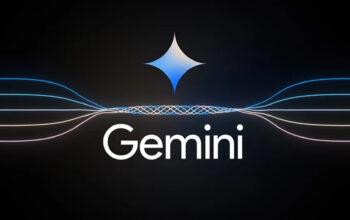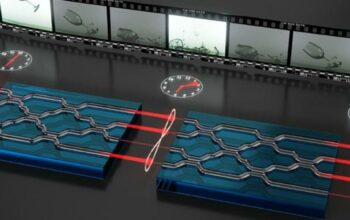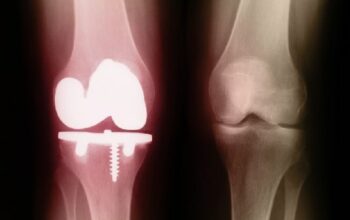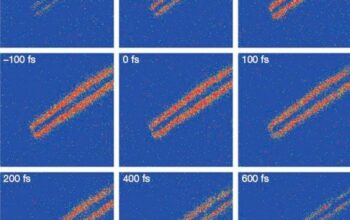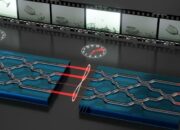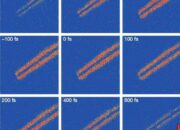The realm of particle physics has captivated scientists for decades, delving deep into the fundamental building blocks of matter. Among these enigmas lies the perplexing behavior of neutrinos, particles that oscillate in unexpected ways and carry elusive qualities. A central question in contemporary physics is the origin of their mass, which, despite being notoriously elusive, is pivotal for our understanding of the universe. The concept of “neutrino mass” not only challenges established paradigms but also beckons a transformation in the theoretical frameworks that become our lenses for comprehending the cosmos.
Neutrinos are remarkable entities, frequently dubbed “ghost particles” due to their enigma and the fact that they interact very weakly with other forms of matter. Armed with an astronomical abundance in the universe, these particles are produced in vast numbers during nuclear reactions, such as those occurring in the core of stars or during supernova explosions. They traverse immense distances, evading detection and creating an aura of mystery. The standard model of particle physics posits that neutrinos are massless; however, experimental findings from facilities like Super-Kamiokande and SNO have illuminated the reality: neutrinos possess mass, albeit exceedingly tiny when compared to other particles.
This unanticipated revelation regarding neutrinos dovetails with several pivotal implications. First, it necessitates amendments to the standard model, leaving physicists grappling with the implications of such changes. How could something so fundamental, so ubiquitous, be at variance with an established theory? A pivotal aspect that garners tremendous interest is the phenomenon of neutrino oscillation, which occurs when neutrinos intermittently transform into one another as they traverse space. This behavior is emblematic of their masses, interwoven within the framework of a unique quantum mechanical foundation.
Further complicating this tantalizing mystery is the question of the mechanism responsible for neutrino mass. Extant theories present a range of explanations. For instance, the seesaw mechanism proposes a tantalizing duality: alongside the lighter neutrinos we observe, exceedingly heavy counterparts exist. These hypothetically massive neutrinos would not be observable directly, yet their existence would provide satisfying symmetry to our understanding of mass generation and particle interactions. The seesaw mechanism raises fertile ground for further inquiry, one that has potential ramifications for elucidating phenomena beyond neutrinos, including dark matter and the fundamental asymmetry between matter and antimatter.
Another intriguing model arises with the introduction of the Majorana neutrinos, particles that are their own antiparticles. This dual role entails an array of adventurous implications, suggesting that the masses of neutrinos might be intimately linked with other realms of physics. The Majorana framework presents possibilities of direct detection methods aimed at exploring the elusive nature of these particles, emphasizing the importance of integrating astrophysical observations with laboratory experiments. Indeed, the quest for these particles is as much about capturing the ethereal as it is about understanding the cosmic tapestry threading through the universe.
Alongside theoretical advancements, significant experimental efforts have emerged over the past decade, aiming to shed light on the neutrino mass mystery. Facilities such as the IceCube Neutrino Observatory at the South Pole have revolutionized our understanding of high-energy neutrino fluxes originating from cosmic sources. By observing the interactions of neutrinos with ice, researchers can infer properties about their mass and oscillation states, ultimately piecing together additional layers of the intricacies of these matter particles. The importance of fostering a collaborative spirit within the scientific community cannot be overstated. This ongoing synergy bodes well for deepening our comprehension of neutrino physics and its connection to broader cosmological questions.
The introduction of next-generation experiments further augments the excitement in the neutrino mass exploration. Projects like DUNE (Deep Underground Neutrino Experiment) signify a paradigm shift in our approach to unraveling the neutrino conundrum. By capturing neutrinos that are produced from a particle accelerator, scientists plan to quantify their mass with unprecedented precision. Such endeavors bring forth the tantalizing possibility of unveiling hidden mechanisms that govern particle interactions and mass generation, subsequently reshaping our understanding of the universe’s fundamental architecture. As consciousness expands into realms previously thought unattainable, physicists remain steadfastly at the helm, holding the keys to both discovery and innovation.
Envision a future in which the mysteries of neutrinos unravel, culminating in a comprehensive theory that eloquently synthesizes the varied threads of modern physics, from dark matter to the genesis of the universe itself. The promise lies in recognizing that the search for neutrino mass is not only about understanding these particles: it’s about transcending boundaries that separate various branches of scientific inquiry. The results will likely inspire an artistic renaissance within theoretical physics, characterized by a suspension of disbelief and an expansive embrace of the novel and unknown.
As this journey unfolds, curiosity will remain the guiding force, transforming obscure concepts into palpable understanding. The subatomic realm, brimming with ambiguity, offers an undeniable allure—one that challenges the very core of our perceptions, pushing the boundaries of human thought. Indeed, the neutrino mass mystery is not merely a scientific inquiry; it is a testament to the relentless spirit of exploration, a manifestation of humanity’s quest to decipher the cosmos.


